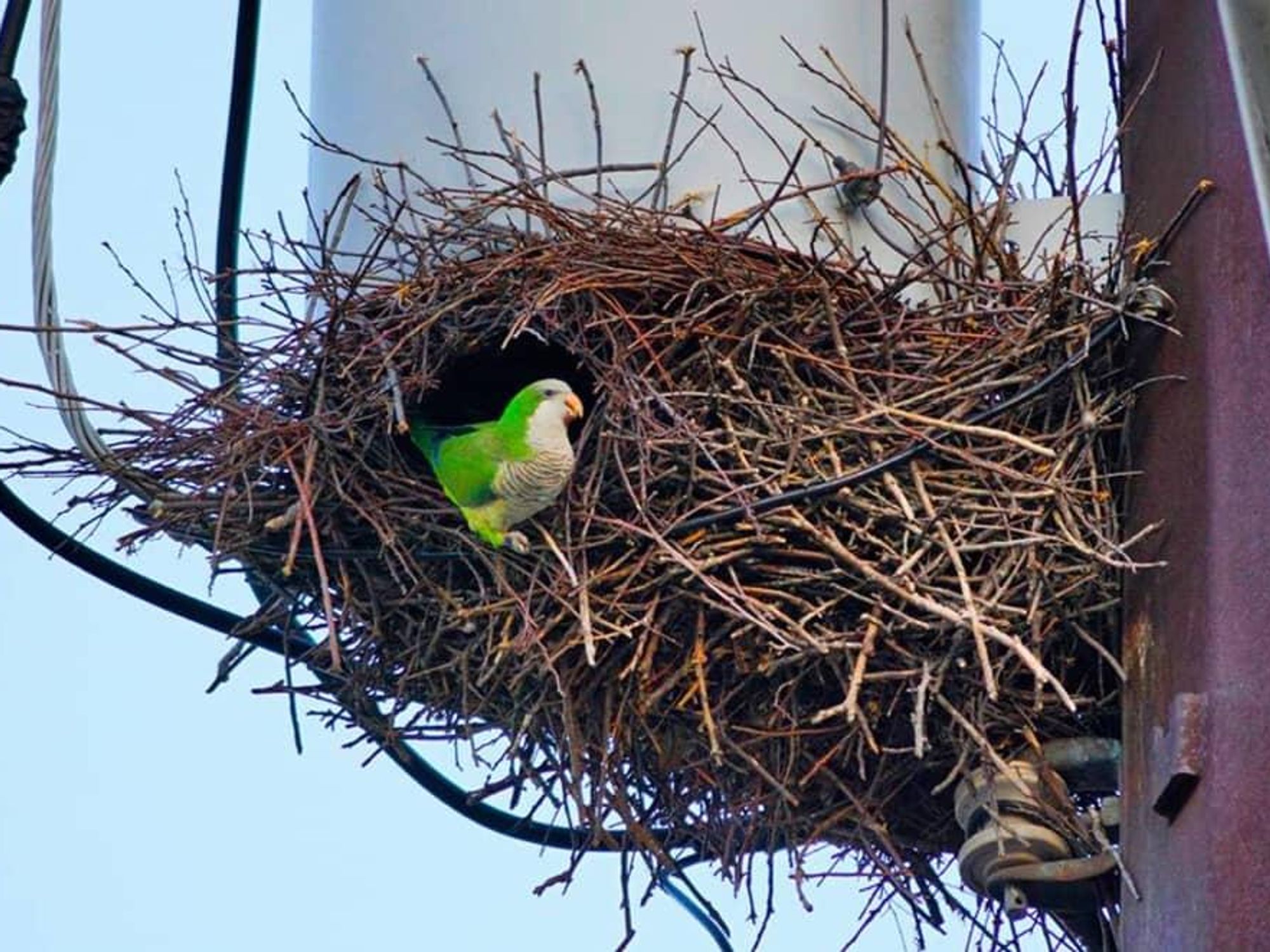Tweet this!
New study explains why monk parakeets and other parrots ended up flocking to Austin

Texas appears to be a paradise for parrots. A new study puts Texas at No. 3 among the states with the most sightings in the wild of these one-time exotic pets.
From 2002 to 2016, bird watchers recorded 23,992 sightings of parrots in the outdoors in Texas, according to the study, recently published in the Journal of Ornithology. Florida ranked first for parrot sightings (39,054) and California ranked second (32,418).
In all, the study tracked sightings of 56 species of parrots in the wild in 43 states. “Naturalized parrots” are now widespread in the continental U.S., the study said, with 25 species established and breeding in 23 states.
The most common parrot species in the U.S. is the monk parakeet, distinguished by its bright green feathers and incessant chatter. According to the Texas Invasive Species Institute, Austin (and East Austin, in particular) is among the most popular places in the U.S. for monk parakeets. These birds typically use power lines to support their stick-formed nests.
Throughout the year, Austin Wildlife Rescue takes in a number of orphaned and injured monk parakeets. The orphaned birds can’t be released back into the wild and, instead, are put up for adoption.
“These little guys are a big personality in a small package, and they’re one of the most affordable parrots,” Austin Wildlife Rescue says on its Facebook page.
Researchers behind the parrot study say tens of thousands of monk parakeets were imported from South America to the U.S. as exotic pets in the 1950s and 1960s. Inevitably, many of these birds made their way into the wild and began breeding.
Just three states — Texas, California, and Florida — support all 25 known breeding species of parrots, the study says. In Texas, these include the yellow-crowned amazon, the red-crowned amazon, the budgerigar, and the green parakeet. The Audubon Society says hundreds of green parakeets can also be found flying around neighborhoods in the Rio Grande Valley.
Why these parrots are scattered across the U.S. stems from a “complicated interaction” of environmental, ecological, and climate factors, the study explained. With the possible exception of the red-crowned amazon and green parakeet in South Texas, all of the parrots now winging it in this country were initially brought here to be kept as caged pets, according to the study.
“Many of them were escaped pets, or their owners released them because they couldn’t train them or they made too much noise — all the reasons people let pets go,” Stephen Pruett-Jones, an ecologist at the University of Chicago who co-authored the study, said in a release. “But many of these species are perfectly happy living here, and they’ve established populations. Wild parrots are here to stay.”
Researchers say parrots have settled in Texas, California, and Florida to take advantage of the warm climates (just like humans do).
Parrots are no longer native to the U.S. Originally, the U.S. claimed two native parrot species: the Carolina parakeet and the thick-billed parrot. According to the study, the Carolina parakeet is now extinct, and the thick-billed parrot, a Mexican species, was driven out of the U.S.

 Pilates is one of the many modalities on the schedule.Photo courtesy of Life Time
Pilates is one of the many modalities on the schedule.Photo courtesy of Life Time


 This giant sauna doubles as a social amenity.Photo courtesy of Life Time
This giant sauna doubles as a social amenity.Photo courtesy of Life Time The Life Time Lounge offers another place to hang out.Photo courtesy of Life Time
The Life Time Lounge offers another place to hang out.Photo courtesy of Life Time